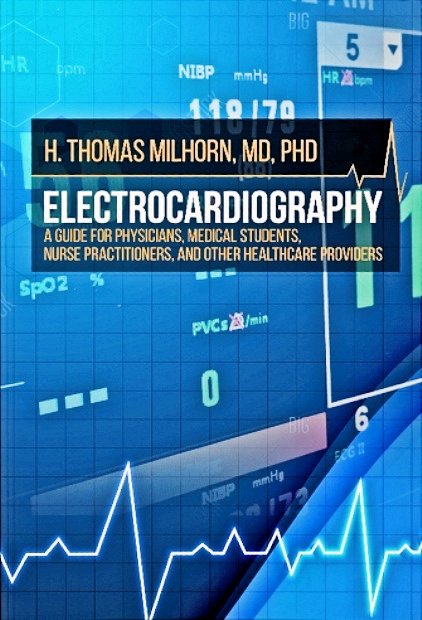|
Chapter 1.
The
Electrocardiogram 1
Electrocardiograph Paper 2
Conduction
System of
the Heart
2
Parts of
the
Electrocardiogram 3
Electrocardiographic Interpretation 13
Chapter
1 Quiz 15
Chapter 2.
Leads
and
the
Normal
Electrocardiogram
17
Leads
17
Normal
Electrocardiogram 26
Chapter
2 Quiz 29
Chapter 3.
Heart
Rate and
Axis 31
Heart
Rate 31
Axis
32
Chapter
3 Quiz 41
Chapter 4.
Atrial
Enlargement,
Ventricular Hypertrophy, and Hypertrophic Cardiomyopathy 44
Atrial
Enlargement 44
Ventricular
Hypertrophy 47
Hypertrophic Cardiomyopathy 53
Chapter
4 Quiz 55
Chapter 5.
Intraventricular Conduction
Defects 57
Bundle
Branch Blocks
57
Incomplete
Bundle
Branch Block 61
Hemiblocks 61
Bifascicular and Trifascicular Blocks 62
Nonspecific
Intraventricular Conduction
Defects 62
Chapter
5 Quiz 63
Chapter 6.
Coronary Artery
Disease 66
Stable
Angina 66
Prinzmetalís
Angina 68
Unstable
Angina 69
Myocardial Infarction 70
Old
STEMI 79
Left
Ventricular Aneurysm 80
Silent
Myocardial Infarction 81
STEMI
and Bundle Branch Blocks 81
Pseudoinfarction
Syndromes 82
Athletic
Heart Syndrome 83
Chapter
6 Quiz 85
Chapter 7. Rhythm Disturbances
89
Sinus
Rhythms 90
Non-sinus Atrial Arrhythmias 92
Junctional
Rhythms 96
Atrioventricular Heart Block 98
Ventricular Rhythm
Disturbances 100
Bigeminy 107
Electrical Alternans 108
Differential Diagnosis of Tachycardia 108
Chapter 7 Quiz 110
|
|
Chapter 8.
Preexcitation Syndromes, Pulmonary Embolus,
Pericarditis, Early
Repolarization, and
Myocarditis 116
Preexcitation Syndromes 116
Pulmonary
Embolus 121
Pericarditis 122
Early Repolarization 124
Myocarditis 126
Chapter
8 Quiz 127
Chapter 9.
Hypothermia, Low
Voltage ECG, Neurological Insult, Dextrocardia, Pacemakers, Takotsumo
Cardiomyopathy, Brugada Syndrome, and
Arrhythmogenic Right
Ventricular Dysplasia
130
Hypothermia 130
Low
Voltage ECG 132
Neurological Insult 133
Dextrocardia 133
Pacemakers 134
Takotsumo Cardiomyopathy 135
Brugada
Syndrome 136
Arrhythmogenic Right Ventricular Dysplasia 137
Chapter
9 Quiz 138
Chapter 10.
Drug Effects, Electrolyte Effects, ECG Worksheet, and Practice
Electrocardiogram 141
Drug
Effects 141
Electrolyte Effects 144
ECG
Worksheet 146
Practice
Electrocardiogram 147
Chapter
10 Quiz 148
Chapter 11.
Pediatric Electrocardiography 152
Normal
Pediatric ECG 151
Abnormal
Pediatric ECG 155
Chapter
11 Quiz 163
Appendix A.
ECG
Findings for Specific Congenital Heart Defects 165
Appendix B.
Practice ECGs 167
Appendix C.
Answers to Chapter Questions and Practice ECGs 171
References 177
Index
181
|
